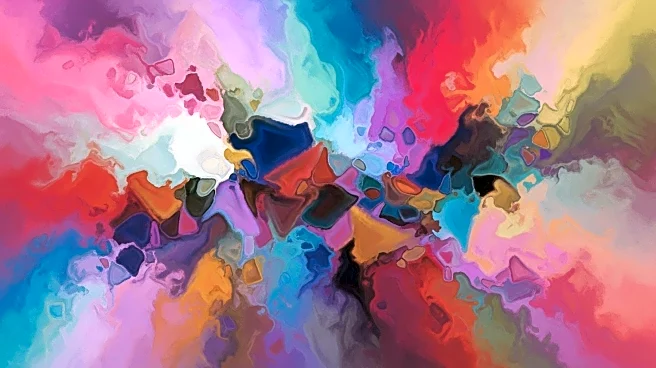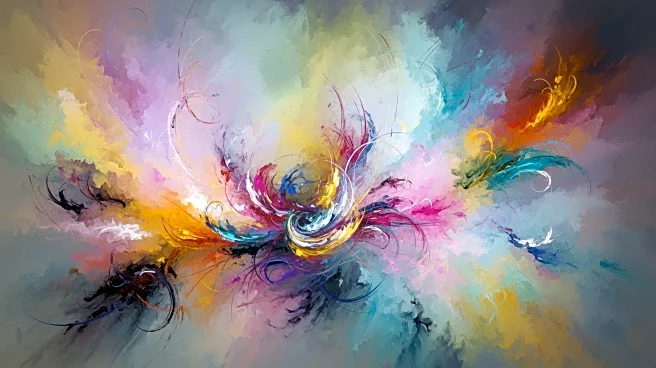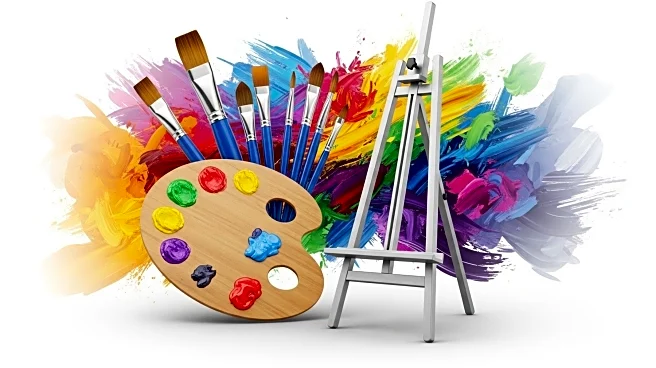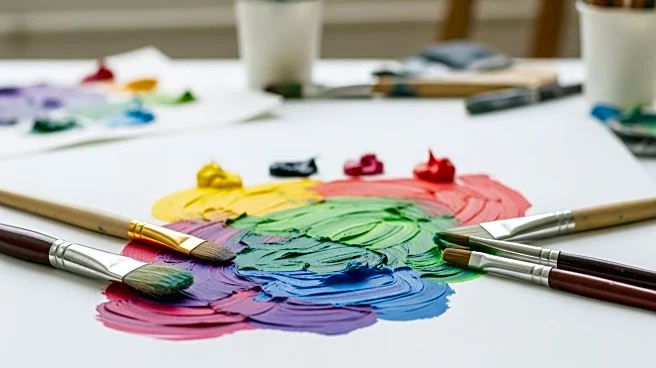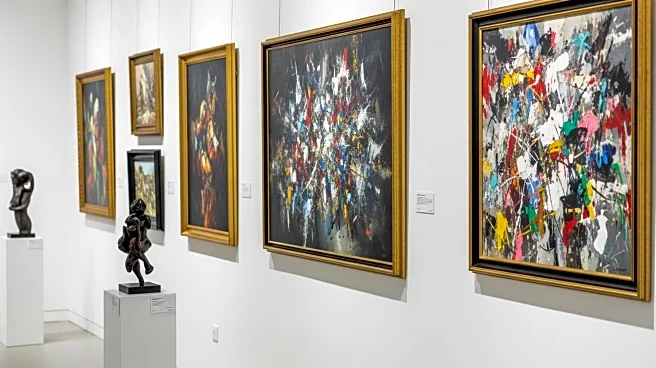What's Happening?
Painters Amy Sillman and Cameron Martin engaged in a conversation about the role of humor and tragedy in abstract art, particularly in the context of Martin's upcoming exhibition 'Baseline' at Sikkema Malloy Jenkins in New York. Martin's work explores the paradoxes and contradictions inherent in contemporary life, using forms that challenge traditional notions of representation and gesture. His paintings, characterized by graphic brushstrokes and abstract shapes, aim to create 'almost signs' that evoke associative readings without definitive meanings. Sillman and Martin discussed the drollness of these works, which blend elements of humor and abstraction to produce a unique artistic experience.
Why It's Important?
The discussion between Sillman and Martin highlights the evolving nature of abstract art and its ability to reflect complex societal themes. By incorporating elements of humor and tragedy, Martin's work challenges viewers to reconsider the relationship between form and meaning. This approach not only enriches the artistic landscape but also encourages a broader dialogue about the role of art in addressing contemporary issues. The exhibition 'Baseline' serves as a platform for exploring these ideas, potentially influencing both artists and audiences in their understanding of abstraction and its cultural significance.
What's Next?
Cameron Martin's exhibition 'Baseline' will be on view at Sikkema Malloy Jenkins in New York through October 11. The exhibition is expected to attract art enthusiasts and critics interested in the intersection of humor, tragedy, and abstraction. As the exhibition progresses, it may spark further discussions about the role of abstract art in contemporary society and its ability to convey complex emotional and intellectual themes. The reception of Martin's work could influence future artistic trends and inspire other artists to explore similar themes in their own practices.
Beyond the Headlines
The conversation between Sillman and Martin delves into deeper implications of abstraction, such as the tension between physical embodiment and opticality in art. Martin's paintings, which appear devoid of physical traces, challenge traditional notions of painting as a tactile medium. This exploration raises questions about the future of abstraction and its potential to redefine artistic expression. Additionally, the discussion touches on the idea of painting as a means to envision a desired world, suggesting a shift towards idealism in art that contrasts with the often somber themes of contemporary life.
